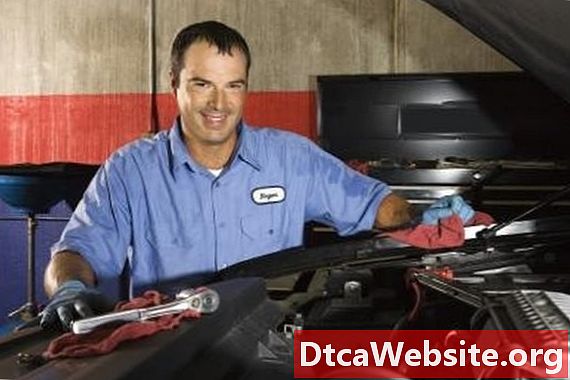
Contenu

Carburetors and turbochargers can get along under the right circumstances; its all a matter of tuning and maintaining the engines air-fuel ratio. Fitting a turbocharger to a carbureted engine is not an impossible task but the tuning that follows is best done by a professional under controlled conditions.
Step 1
Install your turbocharger kit, without the turbo output to engine tubing, by following the manufacturers instructions. This typically involves the replacement of one or both of the exhaust manifolds with units designed to support a turbo, or routing the output of your stock manifolds into a common pipe (called the "up-pipe") onto which the turbo mounts. Youll then need to find an oil pressure line to feed the turbo or turbos and to route the turbo output through an intercooler, if you choose to install one.
Step 2
Install a sealed carburetor modified for blow-through turbo use. These carburetors use sealed throttle shafts to prevent boost leakage, nitrophyl floats resistant to crushing under boost and an accelerator pump referenced to the manifold instead of the boost pressure. You can modify your existing carburetor to perform the same task but this requires extensive knowledge of carburetor function and may not be worth the effort.
Step 3
Connect the turbo or intercooler output to the carburetor with a blow-through carburetor "hat." These crucial couplers bolt where your air cleaner would otherwise sit and make the blow-through setup possible; your carburetor manufacturer should be able to point you in the direction of one that will work with your carburetor.
Step 4
Install a high-pressure, high-volume fuel pump and boost-reference, return-style fuel pressure regulator. A boost-referenced pressure regulator will increase fuel pressure to the carburetor linearly with boost, ensuring that air pressure in your intake system never exceeds fuel pressure in the carburetor. If this were to happen, fuel flow would trickle to a stop and your engine would be damaged.
Tow your car to a qualified shop to have the carburetor tuned for the engine. A good technician would put your car on a dynamometer to test and tune it under all possible driving and acceleration conditions. Tuning time can be expensive but, then again, so can brand new engines.
Tip
- This is a fairly basic outline for a blow-through carburetor setup but installation specifics will vary greatly with each installation. One thing youll need to bear in mind is that even boost-modified carburetors were never designed to deliver additional fuel under boost, so you may want consider a supplemental fuel-enrichment system. You can use a pressure-actuated, water-methanol injection system or a more sophisticated electronic injection system; its all up to your budget and preferences.
Items you will need
- Turbo kit with exhaust manifolds
- Blow-through modified carburetor
- Boost-referenced fuel pressure regulator
- High-pressure, high-volume fuel pump
- Metric and standard sockets, full set
- Phillips and flat-head screwdrivers, full set
- Welding and fabrication tools
- Pliers
- Vice grip


